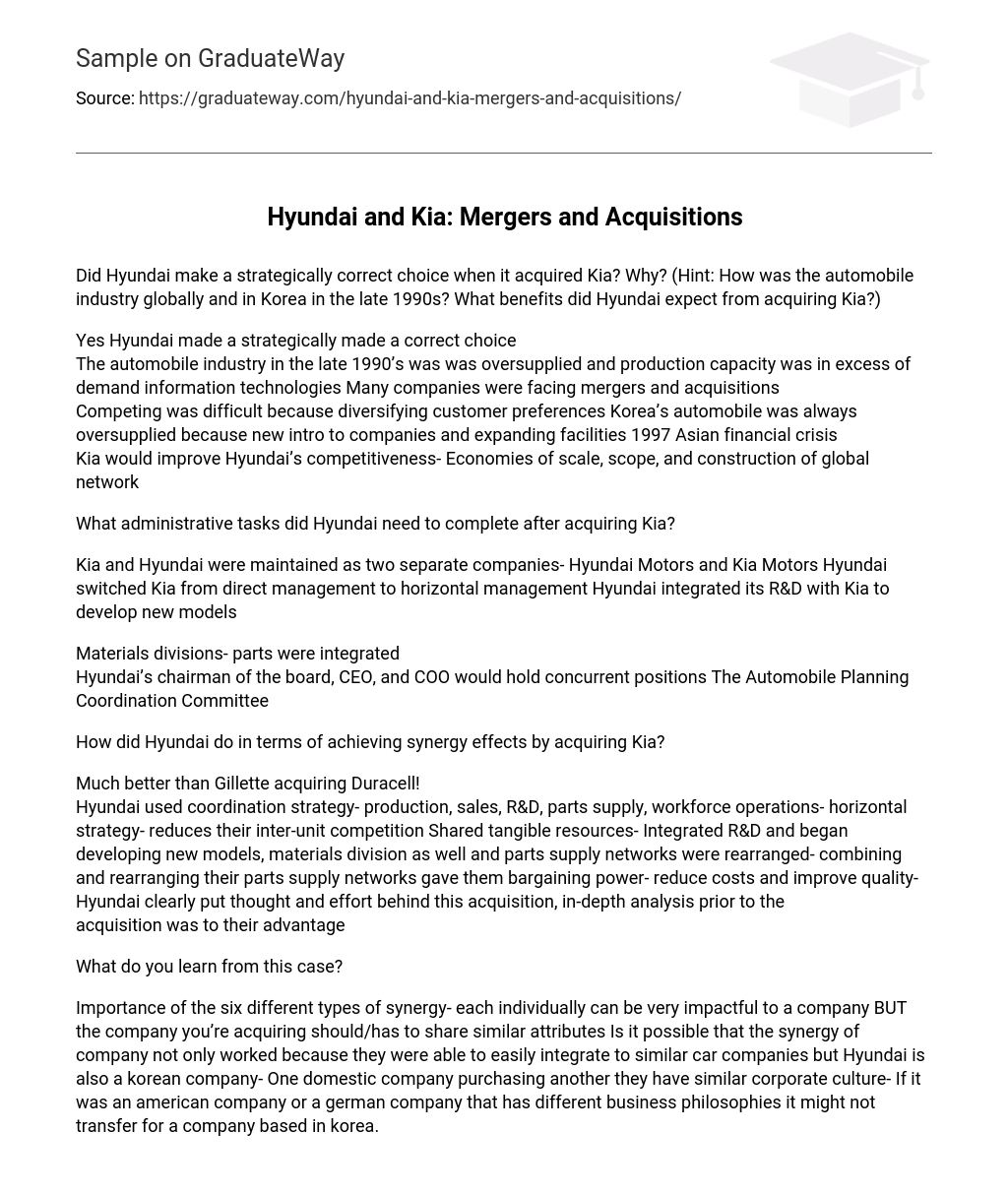Is Hyundai’s decision to acquire Kia a strategically wise move? What were the conditions of the global and Korean automobile industry in the late 1990s? What advantages did Hyundai anticipate from the acquisition of Kia?
Yes, Hyundai made a strategic decision and chose correctly. The automobile industry in the late 1990s was facing an oversupply and there was excess production capacity due to the proliferation of information technologies. Many companies were undergoing mergers and acquisitions. Competing was challenging due to the evolving customer preferences and the continuous expansion of facilities by newly introduced companies in Korea’s oversupplied automobile market. However, Kia would enhance Hyundai’s competitiveness through economies of scale, scope, and the establishment of a global network.
After acquiring Kia, Hyundai had to complete various administrative tasks.
Kia and Hyundai were kept as separate entities, with Hyundai Motors and Kia Motors being their respective companies. Hyundai transitioned Kia from a direct management structure to a horizontal management structure. Additionally, Hyundai combined its research and development efforts with Kia in order to create new vehicle models.
The Automobile Planning Coordination Committee integrated parts of the Materials divisions. Hyundai’s chairman of the board, CEO, and COO would also hold concurrent positions in the committee.
What was the outcome of Hyundai’s acquisition of Kia in terms of achieving synergy effects?
Much better than Gillette acquiring Duracell!
Hyundai used a coordination strategy which involved various aspects such as production, sales, R&D, parts supply, and workforce operations. This horizontal strategy aimed to reduce competition between units. The company shared tangible resources and integrated their R&D efforts to develop new models. They also established a materials division and rearranged parts supply networks. By combining and rearranging these networks, Hyundai gained bargaining power, reduced costs, and improved quality. It is evident that Hyundai put careful thought and effort into this acquisition, conducting in-depth analysis beforehand to their advantage.
What is the knowledge gained from this case?
The significance of the six various types of synergy is considerable for a company. However, it is crucial that the company being acquired shares similar attributes. It is possible that the synergy of a company worked not only because they could integrate well with similar car companies, but also because Hyundai is a Korean company. When one domestic company purchases another, they often share a similar corporate culture. If the acquiring company were American or German, with different business philosophies, it may not be easily transferable to a Korean-based company.





